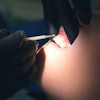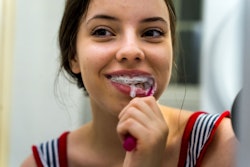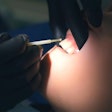Dental problems -- including caries, gingivitis, and gum disease -- may affect how children fall and stay asleep and how long they snooze. The study was recently published in Clinical and Experimental Dental Research.
Dental professionals can play a role in identifying and managing sleep problems, helping to prevent further psychological decline in pediatric patients, the authors wrote.
“Certain dental diseases in pediatric patients may disturb their sleep, affect their oral health-related quality of life, and result in a negative influence on cognition and behavior,” wrote the authors, led by Yaqiong Zhang of Fudan University in China (Clin Exp Dent Res, August 12, 2025).
The goal of the review was to examine the association between common dental diseases and sleep disturbances, along with the possible underlying mechanisms. An electronic search was conducted to gather current research on these associations and track recent progress in understanding the mechanisms involved.
Caries causes pain, discomfort, and infection that disrupts children’s ability to fall and stay asleep. Similarly, chronic inflammation from untreated gum disease can impair sleep quality by elevating proinflammatory cytokine levels. Factors such as altered oral bacteria, immune dysfunction, inflammation, and chronic pain appeared to connect dental diseases with sleep disturbances, they wrote.
Sleep problems like sleep-disordered breathing and obstructive sleep apnea were common in pediatric patients seeking orthodontic treatment, and many related orofacial changes can be corrected with timely intervention. This finding underscores the importance of early detection of dental diseases in preventing sleep disorders and their consequences.
The review, however, had limitations. Long-term longitudinal studies are needed to confirm these findings and establish causal relationships, the authors added.
“Dentists and orthodontists could play a critical role in early detection, prevention, and intervention of the dental health-related sleep disturbances,” they concluded.




















